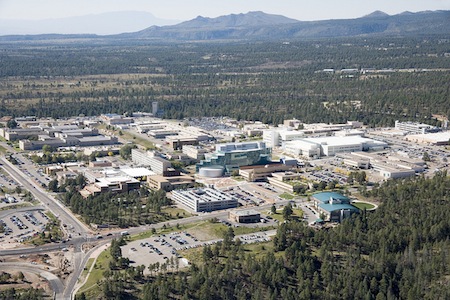UC National Laboratories
Los Alamos National Laboratory (LANL)
Overview
In 1942, a team of scientists, engineers, and technicians led by UC Berkeley physics professor J. Robert Oppenheimer gathered in Los Alamos to begin the Manhattan Project, the secret mission to develop the atomic bomb that would help end World War II.
Still best known for its contributions to national security – recently developing bio-detectors and other detectors to keep terrorists from smuggling nuclear, biological or chemical weapons, for example – LANL research is creating new products and technologies in many other completely different fields, such as a computer code to improve automobile efficiency, tape that conducts electricity without any resistance, and a virus database that may be helpful in developing an AIDS vaccine.
In 1943, UC agreed to manage the laboratory for the federal government. Located 35 miles northwest of Santa Fe, New Mexico, the Los Alamos lab has since become a major research complex, including extraordinarily powerful supercomputers, more than 50 cross-disciplinary facilities and a leading role in the development of the human genome map.
Since 2006, the University of California has participated in the management and operation of LANL as a member of two LLCs. The first LLC – Los Alamos National Security, LLC – operated the Lab between 2006 and 2018. Triad National Security, LLC has operated the Lab since November 1, 2018 and includes members Battelle Memorial Institute and the Texas A&M University System.

